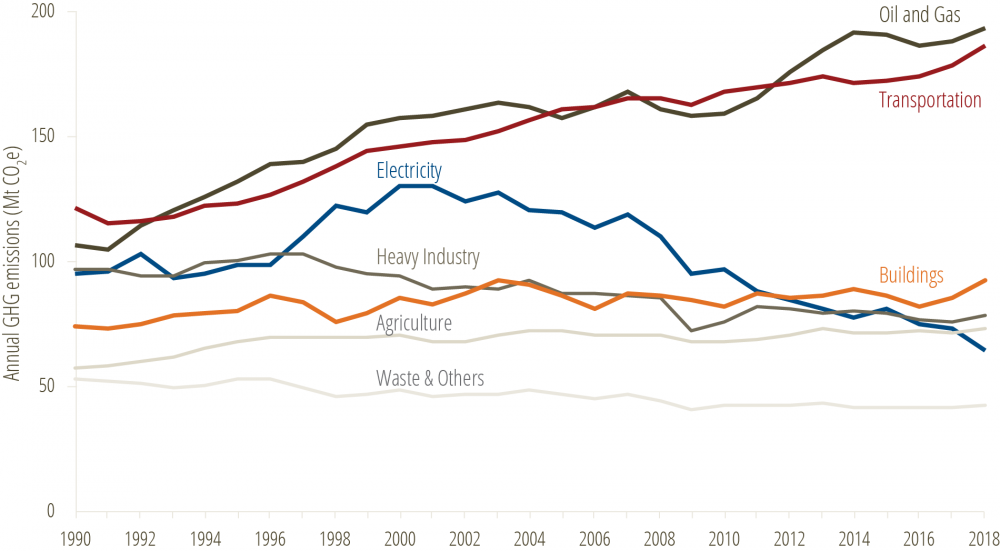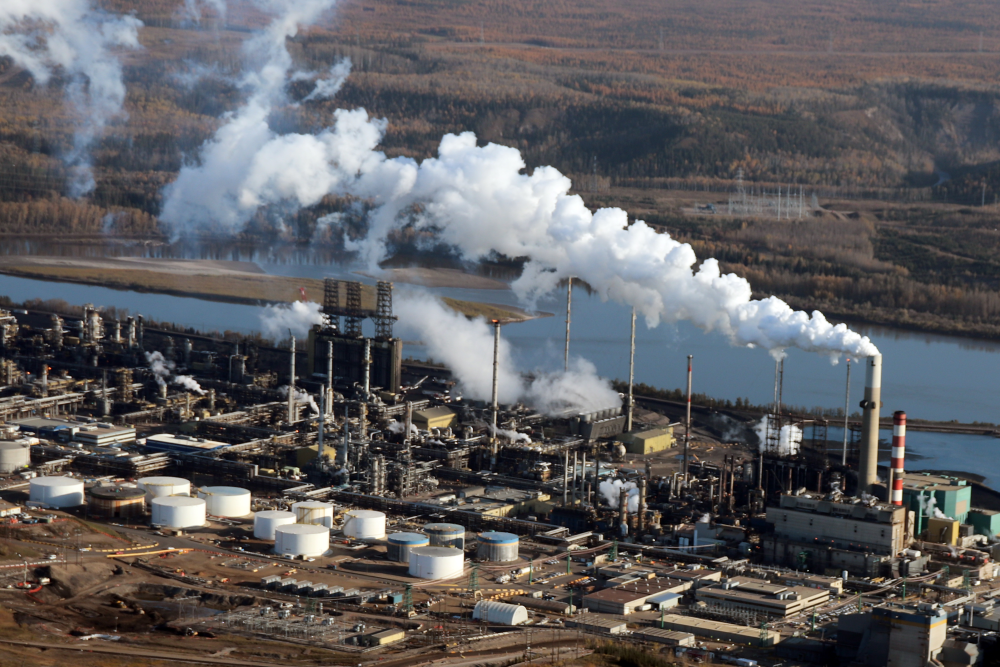The Pembina Institute has long been clear about the opportunities and benefits of serious decarbonization for the oilsands sector, and the need for realistic planning in Alberta to reach a net-zero target by 2050. We were pleased to see Suncor commit to a much more aggressive reduction of its operation's emissions (10 Mt/year or 35 per cent of their absolute 2019 emissions by 2030 compared to a per-barrel intensity reduction of 30 per cent by 2030) while also acknowledging the role it can play to reduce downstream emissions, which represent around 70 per cent of the life cycle emissions of its oil product.
Since 2005, Canada's overall emission reduction initiatives have largely been offset by emissions growth in the oil and gas and transport sectors, so Suncor's move away from an emissions intensity target to an absolute target is critical to aligning with Canada's climate ambitions.

Suncor has also shared a plan that relies on commercially proven technologies for reducing absolute emissions by 35 per cent relative to its 2019 emissions (29 Mt/year) by 2030. This reinforces the fact that we have the knowledge and the expertise in Alberta to reduce emissions today, though this net-zero by 2050 plan would benefit from additional emissions reductions targets between 2030 and 2050, and more details about reducing the full life cycle emissions.
This plan supports the idea that Canada’s policies around carbon pricing and the Clean Fuel Standard can create a road map for oil and gas producers, providing stable and transparent financial signals for short- and long-term investments in technology and efficiency.
In light of last week’s International Energy Agency net-zero report, this plan shows Suncor focusing on maximizing the value of existing operations as opposed to growing production volumes, setting the company up for investment in new clean energy sources. This plan must more explicitly address the significant liabilities from its oilsands operation’s tailings ponds while preparing for reduced global fossil fuel demand as countries implement domestic climate policies designed to explicitly and rapidly drive down consumption of oil and gas.









